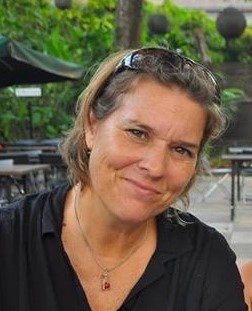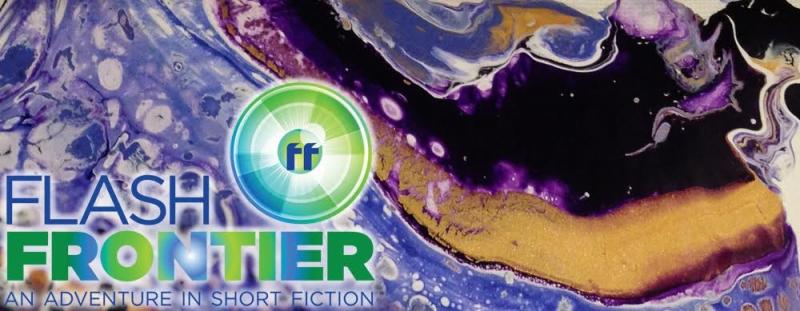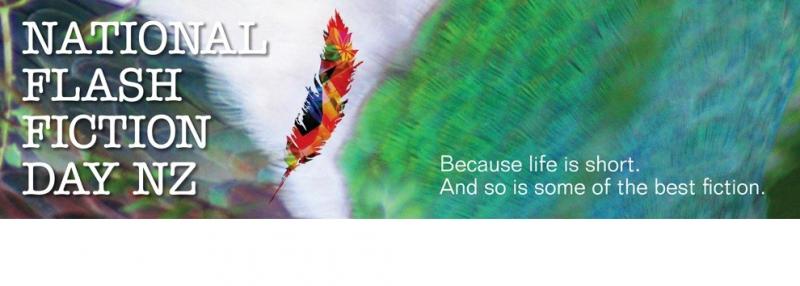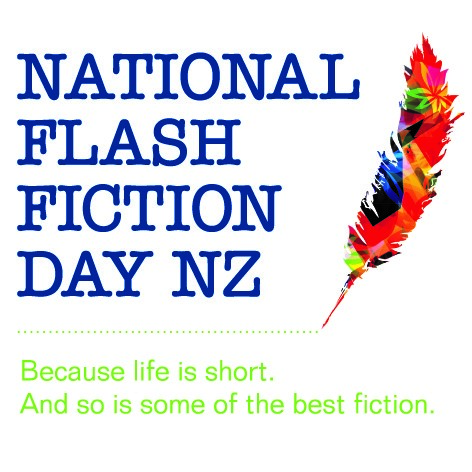Flash fiction/prose poetry in Aotearoa New Zealand
Flash fiction/prose poetry

Kia ora ano.
The creation of flash fiction/prose poetry is increasing exponentially in Aotearoa, New Zealand. It has always been around, but nowadays there are more exponents, more outlets, more coverage, more academic 'acceptance' of the form. It is a significant presence and — to me — a very valuable and viable method to further w i d e n the horizons of poetry and literature in this country. Which has always been the focus of these commentaries.
What is this form and why have I written flash fiction/prose poetry as a Siamese twin? Well, that is a good question. There is often no clear-cut distinction between prose poetry and flash or short fiction, most especially as — obviously — both are economical in terms of the number of words used, given that prose poems can sometimes extend well beyond the word limits defining flash fiction.
However, given the amorphousness here between such subgenres, flash fiction does attempt to tell a story, to at least set up a narrative with some characterization; to plot a plot if you will. This does not occlude storytelling via prose poetry, but the tendency of the latter is to also concentrate on not only the ‘traditional’ poetic tropes of imagery, yet also wordplay, unusual discourse, novelty of effect; to
s t r e t c h poetry beyond the staid, into freedom from constraint. If in so doing, a prose poem seems to replicate a slice of flash fiction, it is a happy coincidence. This is a very simplistic overview, however, because the more I delve into the difference, the more I discern that there is no clear difference!
Michelle Elvy 
Now, the grist and gist of this commentary will be an interview I instigated with Michelle Elvy, a prime moving force behind (and cofounder of) the online flash fiction site, Flash Frontier. Indeed, some of my questions were intended to learn and to discern from Michelle, exactly what the terms prose poetry and flash fiction involve. Yet this delineation is a minor part of what follows here. For my goal is to promote and push these terms further, all in an endeavour to demarginalize them, if there is a such a word. And if there is not, so what. For me, there should never be any prescribed rules and roles concerning ‘how to write poetry.’ Especially in such a multicultural society as ours, in which there are several distinct tongues, and concomitant approaches to creative work.
Let’s move forward to the questions and the responses.
What, then, is flash fiction?
The initial characteristic to note is the brevity of the form. Works up to one thousand words, generally — but often fewer than five hundred. National Flash Fiction Day asks for stories up to three hundred words, while Flash Frontier looks for 250. In strict terms, the genre requires the writer to create within a very limited word count.
But beyond that, and more significantly, the form requires much more: control, precision, specificity, focus. A story so small must be honed to a very fine effect. Like poetry, it requires special attention to language and sound, rhythm and hidden meaning. Writers of flash fiction may jot a story in a few minutes, but the refining is where the work takes place, and the fun. The best flash fictions contain layers — things hidden at the edges, in the spaces between words. Hints, allusions, images that linger. There are visual immersions, or abstract and unexpected connections. All this feels a lot like poetry — and yet, flash differs from poetry because at the heart of each flash fiction is a story, a small narrative that takes the reader into a whole world [my emphasis].
I confess to nagging a little more about the divide between flash fiction and prose poetry. My mind had not quite grasped the fine print, eh. What is the difference (if any) between prose poetry and flash fiction — or do the two genre sort of intertwine?
I’ve been working with Frankie McMillan and James Norcliffe for the last couple of years as we’ve worked on the forthcoming collection, Bonsai: The big book of small stories, and we’ve pondered this very question as editors and as writers ourselves. We see overlap between the two forms, and this book includes both poets and fiction writers alike. We think of this collection as a book of ‘small stories’ because we feel that there is poetry in each story, and there is also story in the poetry we include.
Both forms — poetry and short short fiction — require close attention to language, imagery, sound. There are certainly similarities. But flash fictions often — though not always — contain a narrative that moves forward (and sometimes backward).
In a new interview with this year’s adult National Flash Fiction Day judges Sue Wootton and Tracey Slaughter, we asked them the same question — to ponder the line between prose and poetry. Sue discussed the idea of the line in poetry and the sentence in flash, while Tracey encourages writers “raid the borders of poetry and prose” — an idea I love (more from that interview here). For me, the overlap in forms is where writing is most exhilarating. It’s where you can breathe into spaces and see what develops. Flash memoir, flash novellas — these are also exciting forms as they challenge the writer to present in fragments and play with connections. Because flash fiction forces such focus, a writer may develop a greater sense of rhythm and movement in language, and a reader may come to enjoy prose in new ways.

Why has it become so (quickly) popular in Aotearoa New Zealand? Is it, in fact, a worldwide phenomenon?
Flash is worldwide, yes. It can be traced back decades, in fact. People attribute the six-word story’s roots to Hemingway’s now famous utterance: “For sale: baby shoes, never worn.” The earliest formal collections — and the name itself — came out of the US, with the publication of the Norton series of collections edited by James Thomas, Robert Shapard, and Christopher Merrill: titles such as Flash Fiction Forward, Sudden Fiction, and Flash Fiction International. Forthcoming from Norton is also New Micro Fiction — works up to three hundred words. But even before those, plenty of writers have written small stories even prior to them being labelled as ‘flash’: Borges, Chekhov, O’Henry, Kafka, Carver. So it’s not a new form.
And yet, it feels as if it has recently taken flight in New Zealand. Here, too, we see predecessors: short works by Mansfield, or Frame, for example, and of course the short short fiction collections edited by Graeme Lay. Meanwhile, plenty of New Zealand poets embrace prose poetry, a close cousin to flash. It’s exciting to see the growing interest in the form in New Zealand; enthusiasm spans from new writers to more experienced practitioners of poetry and prose. I think it helps that we see successful writers in New Zealand going places with their flash: both Frankie McMillan and James Norcliffe were included in the aforementioned Flash Fiction International, for example. To see poets who are so highly regarded embracing the form encourages others, I think. At Flash Frontier, we see poets and new writers trying their hand. And there seems to be exceptional interest in the special New Zealand issues we publish.
As for the popularity of flash, people say it’s a form that lends itself to twenty-first century lifestyles and the age of the internet, but I do not believe it’s because we are hurried and have no time for the challenge of a long novel. I don’t think human beings lose their love of reading just because life gets busy: those of us who love to read will keep reading, whether novels or novellas, poetry or plays. And not always online with a quick click of the mouse: there are increasing numbers of flash fiction collections, in real book form, spanning the genre between prose poetry and flash. I think there are two main contributing factors to the growing interest in flash (both in New Zealand and internationally): 1) because it’s both accessible and challenging — which means new writers can dig deep and experienced writers can further hone their craft; and 2) because it lends itself to experimentation and allows the writer a sense of freedom to play — despite the limited word count.
Is ‘traditional’ New Zealand poetry (also connoted as ‘mainstream’ and non-experimental) in a form of conflict with flash fiction/prose poetry — or is there a place for all? I guess I am asking whether you encounter opprobrium from some ‘mainstream’ poets and academics?
I don’t experience any conflict. I think it would be unfortunate for anyone to find conflict where none should exist. Traditional New Zealand poetry holds a special place in New Zealand literary history, sure — but look at how quickly the landscape can change. Works that are more experimental gain considerable acclaim in New Zealand. Take, for example, Diane Brown’s poetic memoir Taking My Mother to the Opera or Simone Kaho’s Lucky Punch. Or Lynn Jenner’s collection that almost defies categorisation, Dear Sweet Harry. And look at the Ockham New Zealand Book Awards, where the 2017 long list included Courtney Sina Meredith’s Tail of the Taniwha, Frankie McMillan’s My Mother and the Hungarians and Tusiata Avia’s Fale Aitu | Spirit House – with the latter short-listed. And the 2018 short lists are just as diverse, with Ngapuhi poet Briar Wood, Sri Lankan-born novelist Brannavan Gnanalingam and Duendin poet Sue Wootton – who is also one of this year’s NFFD judges. I read with great interest the recent announcement of the 2018 short list, which included the following:
Fiction category judging convenor Jenna Todd said the quartet of finalists “are pushing at the edges of what is possible in fiction in a style that's both engaging and brave.” (link here)
Pushing at the edges. That is certainly what the best flash fiction does, too.
Meanwhile, more academic attention is being paid to the form, which perhaps offers it more legitimacy in New Zealand; flash is a wonderful teaching tool as well, so writing schools appreciate the form and use it for writers of all ages. We see mainstream media taking an interest, too — which attracts more and more involvement. Besides the focus that a platform such as Flash Frontier offers, there are also other journals that embrace the form: North & South runs an annual competition; Headland includes flash in its issues. Even The Listener showcased New Zealand flash fiction last year.
At Flash Frontier we’ve been grateful to work with guest editors who are established novelists, poets, and essayists. With Bonsai we see poets whose work exemplifies the short form in many ways: prose poetry, story, parable, haibun. The forthcoming Short Story in English Conference in Lisbon includes a panel or two on flash fiction, with international writers involved —New Zealand’s Tracey Slaughter is taking part with other renowned flash fiction writers and novelists such as Nuala O’Connor, Robin McLean, and Sandra Jensen. It’s wonderful to see that this small form can be — and is — embraced by so many diverse writers.

Michelle is so positive, so keen that her enthusiasm is palpable, even via emails! She had already more than ‘covered’ the background, the significance, the definitions of flash fiction and a extensio, prose poetry, so I wanted to focus more specifically on Flash Fiction and National Flash Fiction Day, the time when the annual flash fiction competition winners are announced. Tell us about Flash Frontier in terms of genesis and its current editorship, when it is issued, how to submit, what the editors are looking for in a submission, youth participation — and so on, please.
Flash Frontier began in 2012 — also the same year we set up National Flash Fiction Day. It started as a New Zealand-based online journal, and we reached a small set of writers interested, mainly, in polishing their skillset by using the form to focus on better writing. I am not sure any of our contributors was ‘expert’ in the form at that point. Since then, the journal has grown considerably and we include international issues as well as NZ-based issues. We’ve seen works from the journal included in each year of the Best Small Fictions series — a wonderful boost to New Zealand writers, as this annual acclaimed series is judged by the top-ranking flash fiction writers who guest edit and read blind in order to select around fifty works from around the world.
The current Flash Frontier editorial team includes (with me) James Norcliffe, Gail Ingram, and Sam Averis. Past editors have included Nod Ghosh, Rebecca Styles, Elizabeth Welsh, Rachel Fenton, and Sian Williams (who founded the journal with me in 2012). You’ll see that our team includes excellent poets; that is not by chance. We are also keen to see novelists, as well as poets, to guest edit the journal, as we feel a broad spectrum of writers can contribute to our understanding of the short form. We’ve been privileged to have worked with James George, Michael Harlow, Siobhan Harvey, Tim Jones, Owen Marshall, Kiri Piahana-Wong, and Rachel Smith — in addition to international guest editors such as David Gaffney, Tania Hershman, Sherrie Flick, and others. Readers may also know that you [Rapatahana], along with Teoti Jardine, have recently guest edited the March ‘Pasifika’ issue of Flash Frontier — forthcoming later this month. I think the diversity of editors for a journal such as this reflects the wide interest in the form. As for submissions — it’s easy! We publish every other month, and our reading schedule and deadlines are posted on the Submissions page. We accept submissions from all ages, though our typical submitter and reader is adult. The youngest person included in our pages was eleven at the time. We’ve seen several teens included — selected by guest editors who have read blind and weighed all works without knowing the ages of the submitters. So I encourage youth to submit — yes! And starting last year, we have also included a youth category in the National Flash Fiction Day competition — another place for young writers to gain excellent experience.
The journal is also looking for more inclusion from the Māori writing community, as you know. The March issue will showcase Pasifika writing, including a special dual-language piece from you [Rapatahana] and interviews with you [Rapatahana] as the judge of the 2018 NFFD te reo Māori category of the NFFD competition (both adult and youth), plus feature interviews with Selina Tusitala Marsh, John Pule, and Anton Blank. We have much to look forward to as we continue to build this flash community!

With such comprehensive and cogent coverage from Michelle, let’s look at some examples of flash fiction and its close cousin prose poetry. I asked her to adumbrate some.
Some examples of flash fiction that stand out, for me:
Any edition of the Best Small Fictions series — 2015 to present. International annual anthology that includes the very best from around the world. I encourage reading these collections over and over — you will find something new each time.
Flash Fiction International — again, the cream of the crop.
Bath Flash Fiction Award — excellent place for writing and reading.
And of course the National Flash Fiction Day winners — these include Frankie McMillan, Heather McQuillan, Patrick Pink, and more. The most recent winners can be found here (2016) and here (2017). And the youth winners from 2017 here. You will not be surprised to see poets among the top flash fiction writers in New Zealand. Some specific pieces:
Tracey Slaughter, ‘Compact’ — Commended in Bath Flash Fiction Award
Aleksandar Hemon, ‘Smithereens’ — in The New Yorker
Bud Smith, ‘Wolves’ — in SmokeLong Quarterly
Kathy Fish, ‘Collective Nouns for Humans in the Wild’ — in Jellyfish Review
Courtney Sina Meredith, from ‘American Journal’ — in Pantograph Punch
Shade Mary-Anne Olaoye, ‘You Run’ — in Brittle Paper
Christopher Allen, ‘A Practiced Silence’ — in Reflex Fiction
Gail Ingram, ‘Whispers’ — in Flash Frontier (second story on the page)
The last word is for Michelle Elvy. Why not feature a couple of her own pieces?
‘Whale Shark’ — at Bath Flash Fiction Award
‘Four Vignettes on Flash Fiction’ — in SmokeLong Quarterly
Tena koe/thank you.
Feasting in the Skinny Country: Aotearoa New Zealand Poetry